Two years after its start the Levvel-bloc plant produced its 55,000th block this week!
On Friday, September 27, 2019, the Levvel-bloc factory officially opened and after more than 2 years, the 55,000th block was produced this week!
The plant produces 75,000 Levvel concrete blocks for construction consortium Levvel (BAM, Van Oord and Rebel) to be used for cladding the Afsluitdijk, commissioned by the Dutch Ministry of Waterways and Public Works, Rijkswaterstaat. The turn-key developer KTB Machinery and the construction company Consmema Metalworking, both part of The Machinery Group developed, built and put the plant into operation. After its start-up period, the plant’s performance exceeds all expectations. This milestone was reason for The Machinery Group to explain the production facility in more detail.
The starting point of the plant was to produce 75,000 concrete Levvel Blocs. Levvel Blocs are the further development of the BAM Xblocs, the XblocPlus. Design, strength and action were developed in detail for the Dutch Afsluitdijk, the IJsselmeer Dam. Each concrete Levvel Bloc has a tapered hole for proper handling of the Levvel Bloc outside the factory. Each Levvel Bloc weighs approximately 6,500 kg. This means that a total of 487,500,000 kg of concrete will be processed in three years. To guarantee the production, the decision was made to build a completely new automated production facility, a plant that can be disassembled in parts to be reused after the Afsluitdijk project.
As soon as this wish was made clear, the conditions and starting points were mapped out and KTB Machinery as a turnkey supplier could get to work. Preparations included: concept engineering, detail engineering, construction, construction supervision, final assembly, and operational. Consmema Metalworking constructed various parts and engineered and built over 100 concrete moulds & 160 carts.
Layout of the plant
The plant is divided into several work stations whereby each station has its own function. Most stations operate fully automated. A logistical system serves to connect the stations. Pallet wagons transport the moulds, filled moulds and Levvel-blocs from one station to the next until they are ready to be used. The core of the logistics system are six 100-meter lines with distribution stations at each end that move the pallet wagons from one lane to the other.
Each line has its own function and some have computerized workstations. The first line includes the filling station and the ECO-Top layer station.
The filling station is the starting point of the production line. Here the steel conical shaped moulds are filled with concrete. Filling is fully automized and takes place in multiple loads. Vibrating needles ensure that the concrete is properly compacted and prevent any large air bubbles.
Applying ECO Top Coat
After one to two hours of drying, the filled mould arrives at the ECO-Topcoat Station. Here, the top of the Levvel Bloc in the mould is properly roughened and provided with small bowls. These bowls will house algae and other organisms when the blocks are placed on the Afsluitdijk.
After application of this ECO Topcoat, the distributing system takes the pallet wagon with filled mould to the next track. Levvel Blocs will continue to dry and harden. After a few hours of drying, the concrete is hard enough to start demoulding.
Demoulding the Levvel bloc
The demoulding process is partially automated in an environment protected by light screens. The conically shaped cores are hydraulically pulled out at the bottom and will literally disappear. The time has then The demoulding process is partially automated in an environment protected by light screens. The conically shaped cores are hydraulically pulled out at the bottom and will literally disappear. The time has then come to manually loosen the special bolted connections. After completing this operation the mould is released and the light screen is
active again. The machine will automatically open the mould and the system will transport the Levvel Bloc is to the drying line, and an empty pallet wagon enters the station.
At that point, the mould is prepared for the next cycles. It is cleaned manually and demoulding oil is applied. The mandrel that was removed will be replaced through the bottom of the pallet wagon. The mould parts are automatically joined together and placed on the pallet wagon. Bolts are manually tightened.
After its release, the mould is ready for use again.
Computer controlled output
Next to the conveyor lines inside, there is a hub outside the plant where Levvel Blocs are stored until they are collected by and stored the gantry crane on the site. Sensors measure which pallet wagons are empty and which are not, and this will determine where the computer will store new Levvel Blocs that are ready.
Proud of the final result
With the 55,000th block out of the factory, production is nicely on track. A top achievement by the Levvel consortium. KTB Machinery and Consmema are proud of their contribution to this challenging project in all respects. The result is impressive. “A concrete factory as you expect a modern concrete factory to be,” says Johan Kooij (Director).

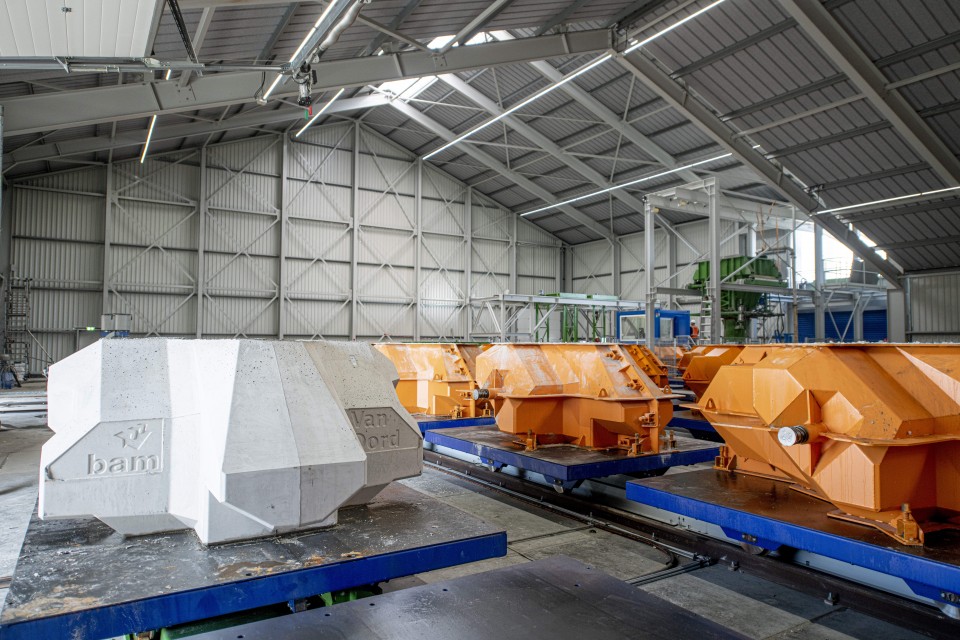
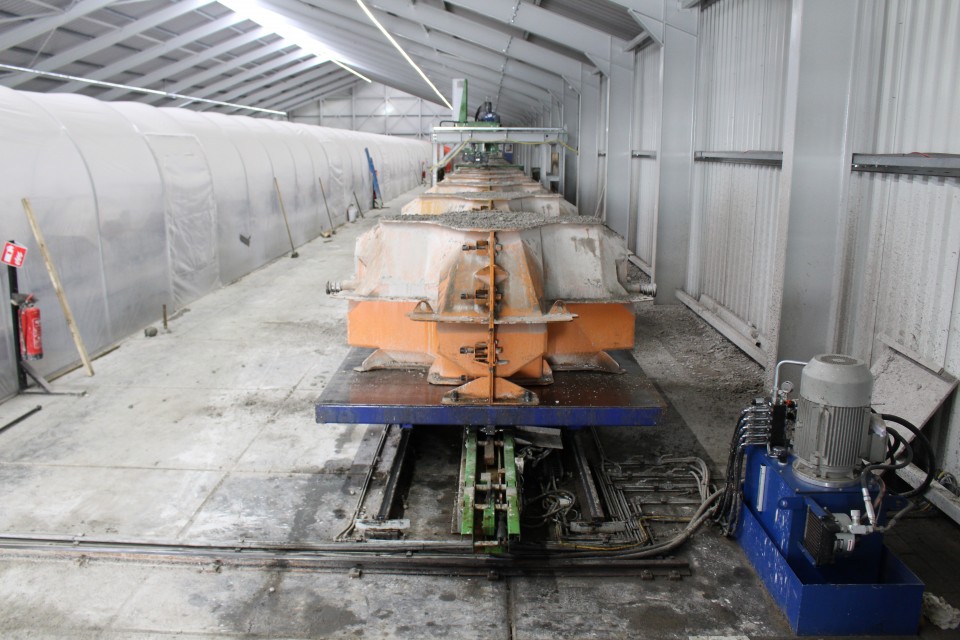
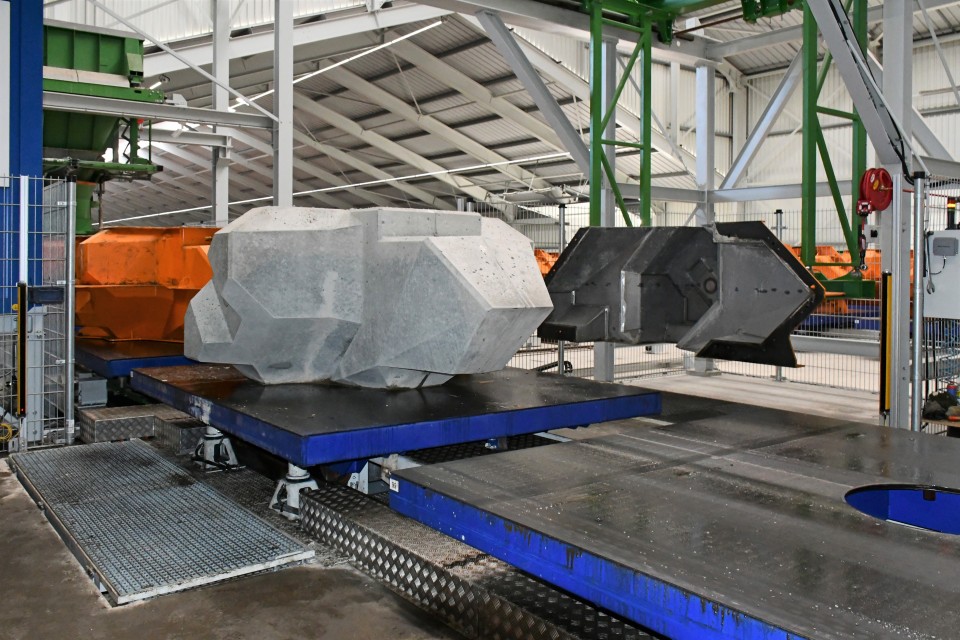
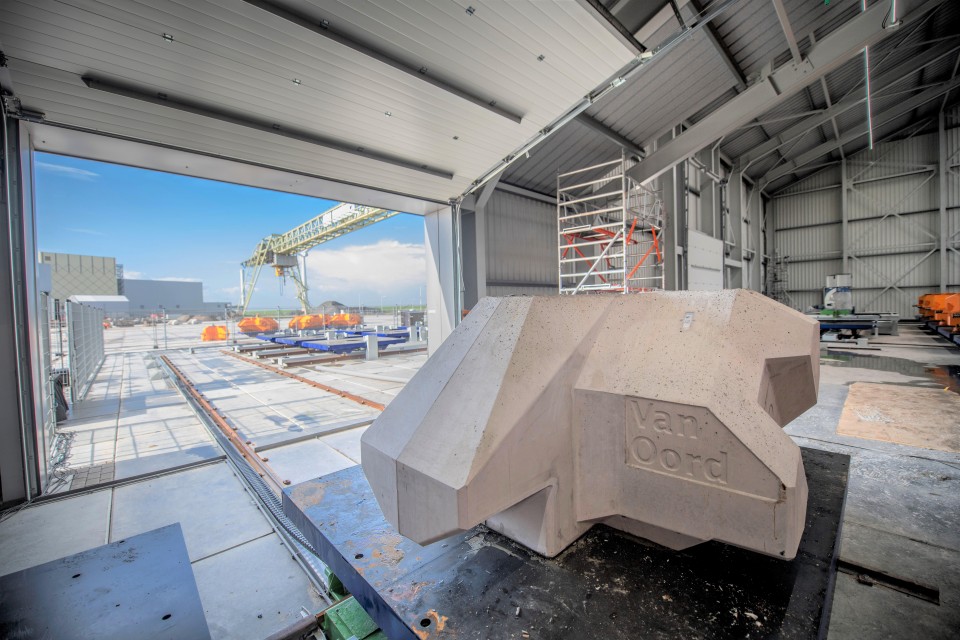
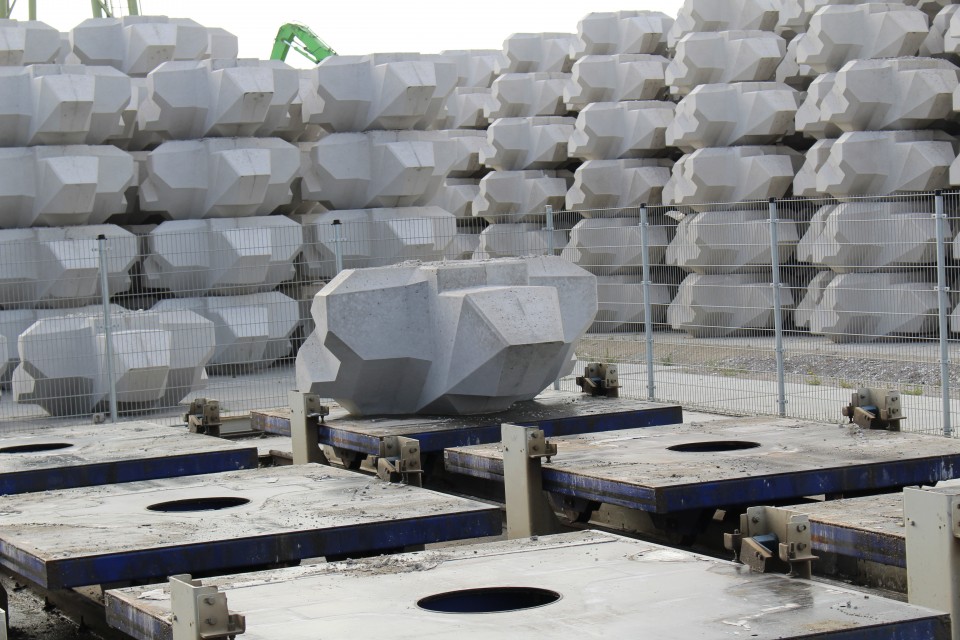
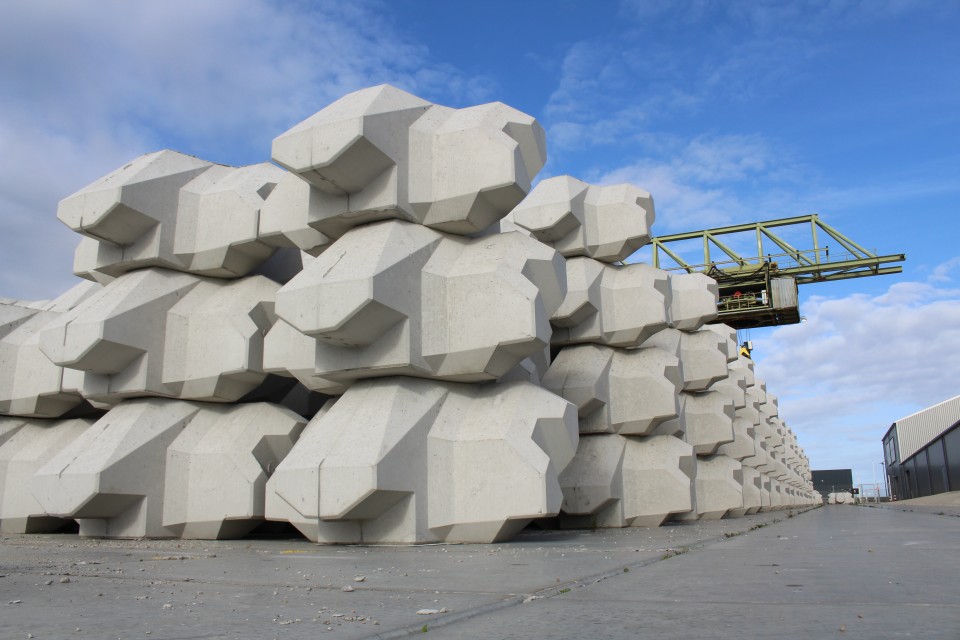
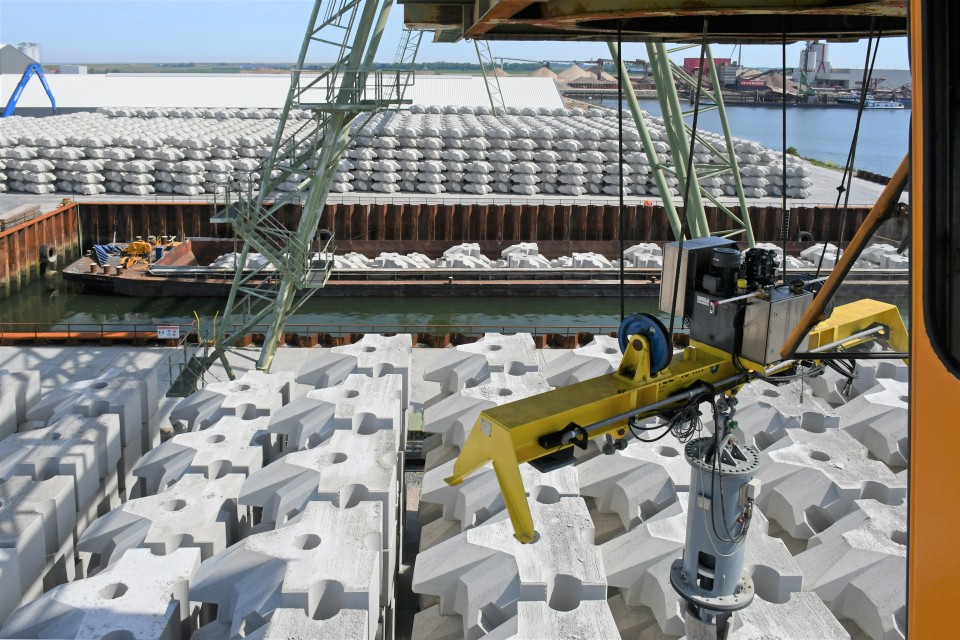

 +31 (0) 38 444 28 55
+31 (0) 38 444 28 55





